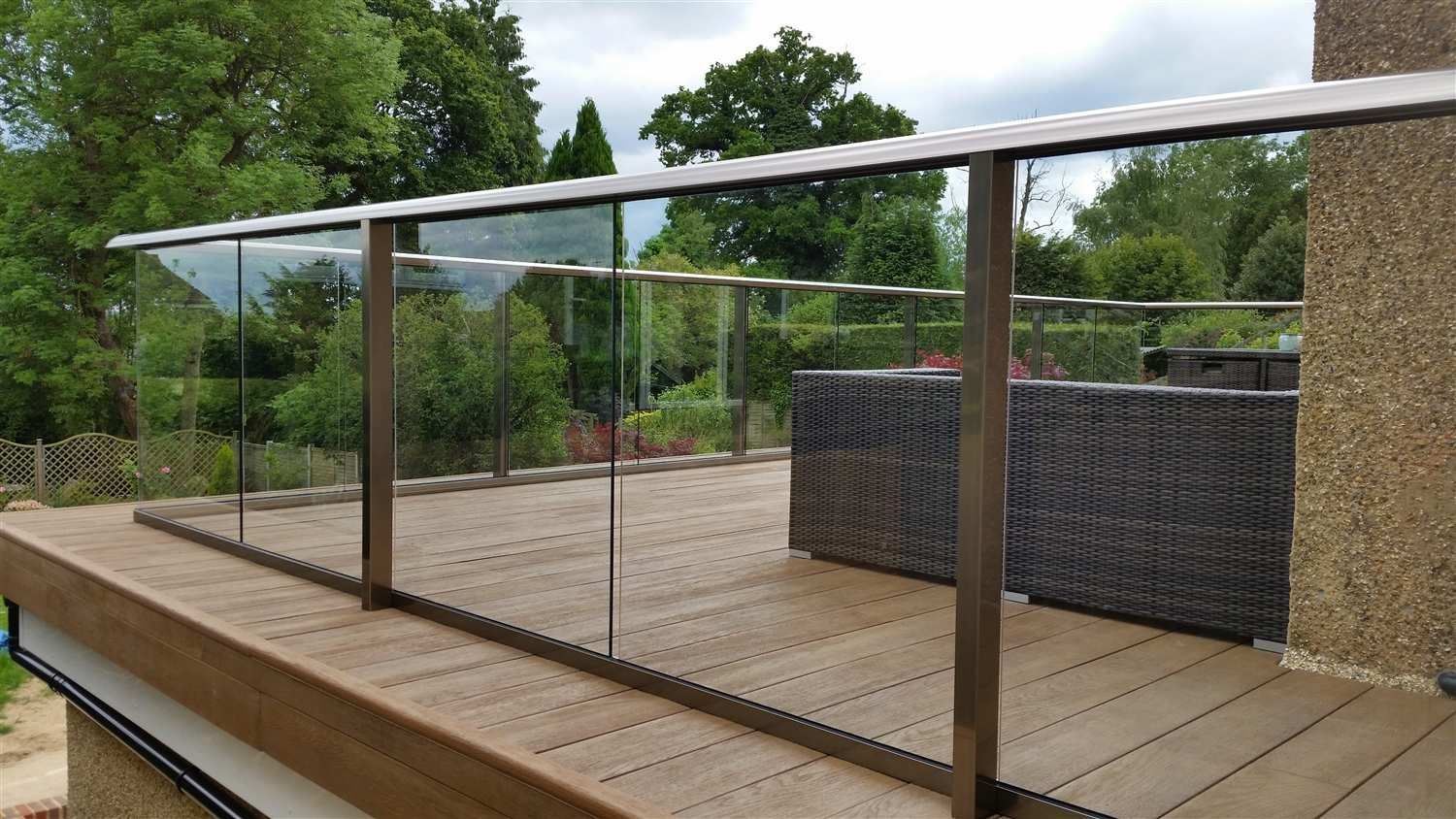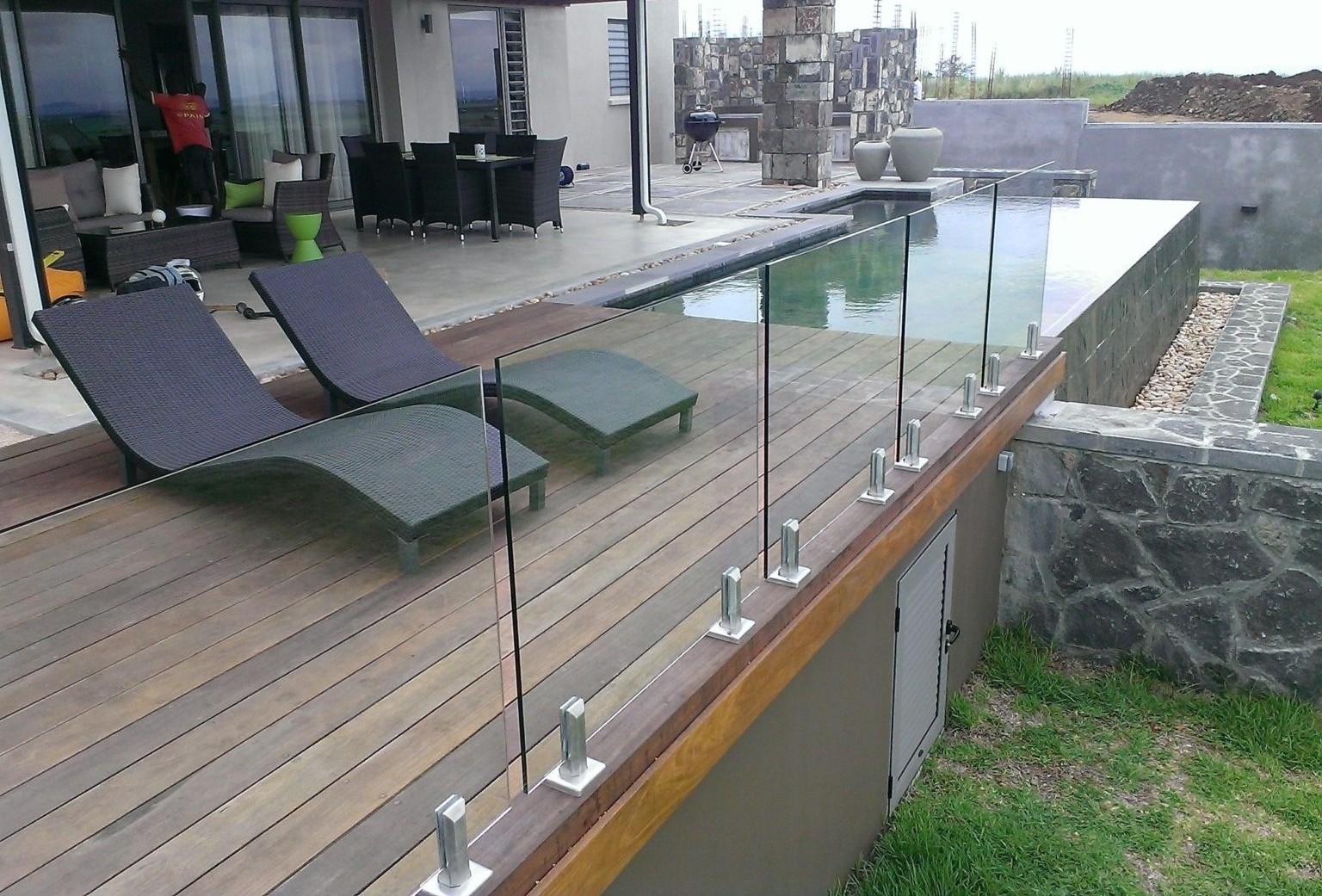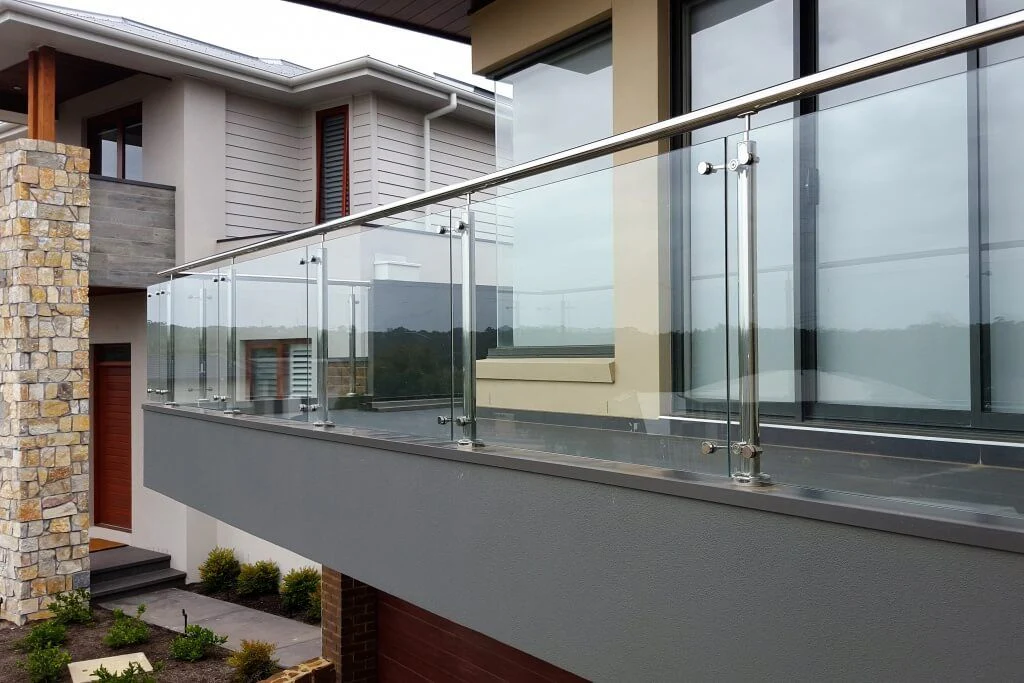Railing is not only functional, ensuring safety and stability in various spaces, but they also play a significant role in the aesthetic appeal of buildings, both inside and out. They come in a variety of materials, designs, and finishes, each contributing to the overall decor and structural integrity of staircases, balconies, decks, and other areas where barriers are necessary.
Glass Railings – Transparency & Luxury
Glass railings are a premium choice for those who seek unobstructed views and contemporary elegance. Offering a modern look and ensuring unobstructed views, glass railing is ideal for contemporary homes and commercial buildings. They are typically combined with metal or wooden handrails and can be used both indoors and outdoors.
Benefits of Glass Railings:
- Modern & Stylish – Enhances the aesthetic appeal of any space
- Unobstructed Views – Ideal for balconies, staircases, and terraces
- Weather-Resistant – No rust, corrosion, or damage from external elements
- Easy Maintenance – Simple to clean and maintain its crystal-clear appearance
- Versatile Designs – Available in frameless, semi-framed, or fully framed options
Applications of Glass Railings:
- Balconies & Terraces – Provides safety without blocking scenic views
- Staircases – Creates a floating, elegant look indoors and outdoors
- Poolside Areas – Adds a luxurious touch while ensuring safety
- Commercial Spaces – Widely used in offices, malls, and hotels for a modern finish
Stainless Steel Railings – Strength & Durability
Stainless steel railings are known for their durability, rust resistance, and contemporary appeal, making them a reliable choice for both residential and commercial spaces. Also, Stainless steel railings are known for their durability, rust resistance, and contemporary appeal, making them a reliable choice for both residential and commercial spaces.
Benefits of Stainless-Steel Railings:
- Highly Durable – Resistant to corrosion, rust, and extreme weather conditions
- Minimal Maintenance – Requires little upkeep while maintaining its shine
- Sleek & Modern Design – Complements contemporary interiors and exteriors
- Strong & Secure – Provides maximum safety for staircases, balconies, and walkways
- Customizable Finishes – Available in polished, brushed, or matte finishes
Applications of Stainless-Steel Railings:
- Staircases & Walkways – Enhances the structural appeal with a modern touch
- Balconies & Rooftops – Offers safety while maintaining an open aesthetic
- Public & Commercial Buildings – Commonly used in malls, hotels, and offices
- Outdoor & Indoor Use – Weather-resistant properties make it ideal for both settings
Why Choose Glass & Stainless-Steel Railings?
- Modern & Elegant – Perfect for contemporary homes and commercial spaces
- High Strength & Safety – Ensures long-term reliability and security
- Weather & Rust Resistant – Built to withstand harsh environmental conditions
- Low Maintenance – Simple cleaning and upkeep for lasting beauty
- Customizable Designs – Various styles, finishes, and configurations available
Upgrade your space with glass and stainless-steel railings, where style meets durability!
Design Considerations
When selecting railing, it’s important to consider both function and style. The design should complement the architecture of the building and meet any regulatory standards for safety. For outdoor installations, materials should be chosen base on their ability to withstand local weather conditions.
Safety and Compliance
Railing is subject to various building codes and standards, which dictate their height, strength, and spacing of components. For residential properties, railing is typically required to be at least 36 inches high, while commercial buildings may have different requirements.
Installation
Proper installation is crucial for the effectiveness and longevity of railings. It is recommend working with professional contractors who can ensure that the railings are securely anchored and meet all safety standards.
Maintenance
The longevity of railing depends significantly on regular maintenance. Wood railing may need periodic staining or painting, while metal railings might require treatments to prevent rust. Glass railing should clean regularly to maintain clarity and prevent etching.
Railing is an essential element of any building, providing safety and contributing to the visual harmony of the space. Whether upgrading an old railing system or installing new ones in a construction project, the choice of material and design can significantly impact both the aesthetics and functionality of a property.


